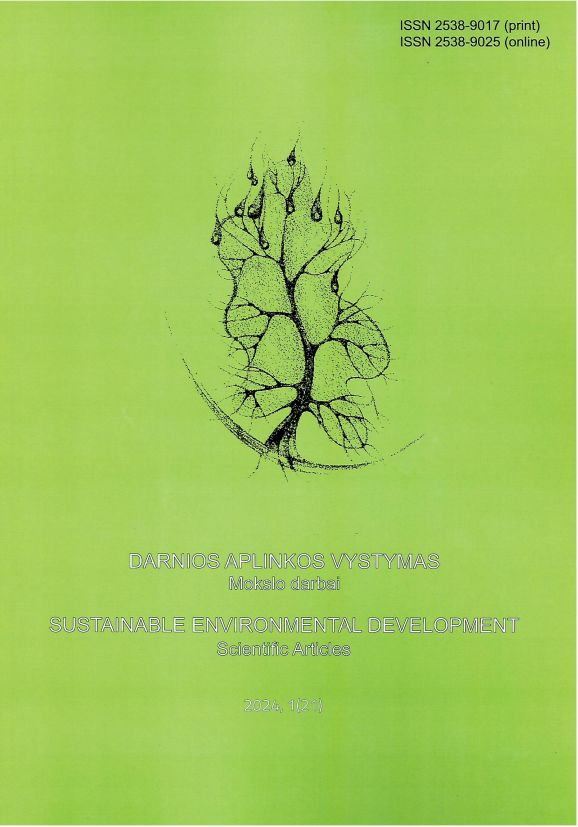Changes in Agricultural Land Areas from 2004 to 2024 and Their Causes in Klaipeda County
DOI:
https://doi.org/10.52320/dav.v22i1.359Keywords:
Agricultural land, agricultural land use, area change, causes of changes in agricultural land use areasAbstract
Studies on agricultural land area changes are crucial for ensuring food security, promoting sustainable land use, protecting the environment, supporting economic growth, monitoring climate change impacts, and guiding policy development. They help identify challenges and plan long-term solutions to balance food production, environmental conservation, and economic development.
The change in agricultural land use is influenced by several key factors: economic (market fluctuations, subsidies, farm modernization), demographic and social changes (emigration, aging farmers, farm consolidation), natural factors (climate change, soil degradation), and urbanization (urban expansion, infrastructure development). Environmental policy also has a significant impact, promoting the restoration of natural ecosystems and reducing the agricultural impact on the environment.
After analyzing the changes in agricultural land areas in Klaipėda County between 2004 and 2024, it was determined that the area of agricultural land decreased by 9,775.89 ha or 3.46%. During this period, arable land decreased by 5,367.78 ha or 2.28%, orchard areas decreased by 4,240.15 ha or 83.89%, and the area of meadows and natural pastures also decreased by 167.96 ha or 0.41%.
Between 2004 and 2024, agricultural land in most municipalities of Klaipėda County has decreased. Notably, Klaipėda and Palanga municipalities saw the most significant declines, with reductions of 22.45% and 13.41%, respectively.
Downloads
Published
Issue
Section
License
Copyright (c) 2025 Giedrė Ivavičiūtė

This work is licensed under a Creative Commons Attribution 4.0 International License.
Individual articles are published Open Access under the Creative Commons Licence CC-BY 4.0, which permits unrestricted use, distribution, and reproduction in any medium, provided the original author and source are credited. Authors retain copyright in their articles, but grant Klaipėdos valstybinė kolegija the right of the first publication.

